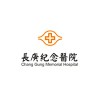Efficacy of Integrated Therapy of rTMS and rPMS on Upper Limb Function in Patients With Stroke
Stroke

About this trial
This is an interventional treatment trial for Stroke focused on measuring Repetitive transcranial magnetic stimulation, Repetitive peripheral magnetic stimulation, stroke, novel treatment
Eligibility Criteria
Inclusion Criteria:
- first stoke and in stable phase
- age 20-80 years
- unilateral brain lesions with unilateral hemiplegia
- brain wave examination without epileptic waves
Exclusion Criteria:
- brain stem or cerebellar stroke
- Patients with epilepsy
- Patients with aneurysm or cerebrovascular malformation
- Patients with mental illness
- Patients with degenerative diseases (such as neurodegenerative diseases)
- Patients with severe intelligence or language barriers (such as mental retardation or severe communication impairment)
- Patients with serious medical conditions (such as heart failure)
- Patients with acute disease (such as infection)
- Patients had metal implants in the body (such as cardiac rhythm or brain metal implants, metal clips for aneurysms)
- Patients had botox injection or surgery in the first half of the study
- pregnant woman or breastfeeding woman
- other obstacles (such as claustrophobia, obesity, etc.)
Sites / Locations
- Chang Gung Memoria HospitalRecruiting
Arms of the Study
Arm 1
Arm 2
Arm 3
Arm 4
Arm 5
Arm 6
Arm 7
Arm 8
Arm 9
Experimental
Experimental
Sham Comparator
Experimental
Experimental
Sham Comparator
Experimental
Experimental
Sham Comparator
rTMS+rPMS_iTBS_R
rTMS+rPMS_cTBS_R
rTMS +sham-rPMS
rTMS+rPMS_iTBS_M/U
rTMS+rPMS_cTBS_M/U
sham-rTMS+sham-rPMS
rTMS + optimal-rPMS
rTMS+ sham-rPMS
sham-rTMS+optimal-rPMS
In this group, they received intermittent theta burst stimulation(iTBS) on affected hemisphere after following iTBS at radial nerve on affected hand.
In this group, they received intermittent theta burst stimulation on affected hemisphere after following continuous theta burst stimulation(cTBS) at radial nerve on affected hand.
In this group, they received iTBS on affected hemisphere after following sham TBS stimulation at radial nerve on affected hand.
In this group, they received iTBS on affected hemisphere after following iTBS at median/ulnar nerve on affected hand.
In this group, they received iTBS on affected hemisphere after following cTBS at median/ulnar nerve on affected hand.
In this group, they received iTBS on affected hemisphere after following sham TBS stimulation at median/ulnar nerve on affected hand.
In this group, patient received iTBS on affected hemisphere after following optimal repetitive peripheral magnetic stimulation(rPMS) on affected hand.
In this group, patient received iTBS on affected hemisphere after following sham repetitive peripheral magnetic stimulation on affected hand.
In this group, patient received sham iTBS on affected hemisphere after following optimal repetitive peripheral magnetic stimulation on affected hand.
Outcomes
Primary Outcome Measures
Secondary Outcome Measures
Full Information
1. Study Identification
2. Study Status
3. Sponsor/Collaborators
4. Oversight
5. Study Description
6. Conditions and Keywords
7. Study Design
8. Arms, Groups, and Interventions
10. Eligibility
12. IPD Sharing Statement
Learn more about this trial
